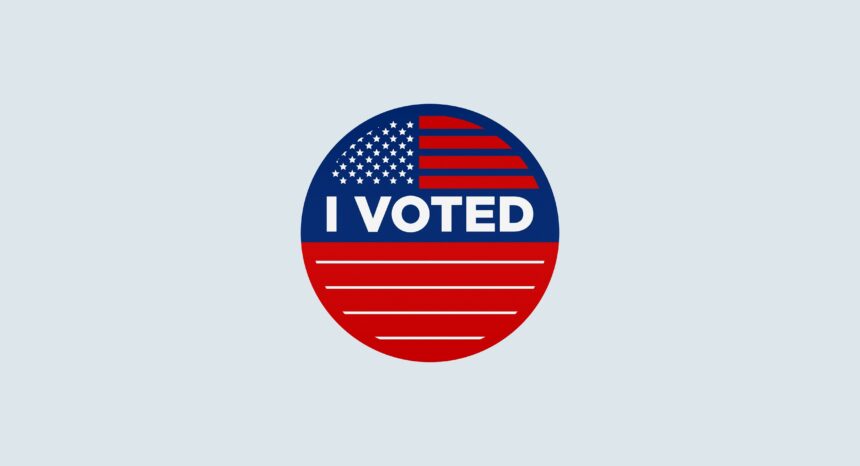Americans have never voted directly for president. The U.S. Constitution specifies that state electors — not everyday citizens registered to vote — elect the president and vice president. It’s those presidential electors registered voters choose on Election Day. Together, those electors make up the Electoral College.
When registered voters choose President Donald Trump or former Vice President Joe Biden or another candidate on Nov. 3, what they’re really doing is telling nominated electors, “I want you to vote for this person for president.”
Whichever candidate wins a state’s popular vote, it’s their party’s slate of electors who get to then vote for president. The candidate who receives a majority of electoral votes — 270 out of 538 — wins the presidency. The varied suite of state laws governing how presidential electors are nominated and cast votes is available from the National Association of Secretaries of State.
Winner take all (electors)

Thirty-two states require that their electoral votes go to the candidate who wins the statewide popular vote. Electors who snub the popular preference face fines or criminal charges in a few states. Electors typically vote for president at their state capitol roughly a month after Election Day. Individual secretary of state offices can answer questions about whether voting by presidential electors is open to the public.
Maine and Nebraska are exceptions to the winner-take-all-electors rule. Those states have what’s called a “district system.” Two electoral votes go to the statewide popular vote winner. Then there’s one electoral vote for each congressional district, appointed based on the vote winner within the district. There are three congressional districts in Nebraska and two in Maine. In 2016, three of Maine’s electoral votes went to Hillary Clinton and one electoral vote from its 2nd congressional district went to Trump.
The U.S. has what’s called “decentralized” voting. That means while there are federal agencies that do things like enforce campaign finance laws, there’s no federal agency or bureau that runs presidential elections. That job is left to individual states.
The national census taken every 10 years determines each state’s number of representatives in the House of Representatives — as well as each state’s number of electors who vote for president. The number of presidential electors in a state equals the state’s total number of representatives and senators. The District of Columbia gets three electors.
Processes vary for nominating electors
The Constitution doesn’t say how state legislatures should nominate electors, and each state determines how it does so. In modern presidential elections, political parties in each state nominate electors through a variety of formal and informal processes during the spring and summer of an election year. Electors are usually active and loyal party members, so they’re expected to vote along party lines.
The way it works oftentimes is that the major party organizations within a state — Republican and Democratic — nominate a slate of electors prior to Election Day and send those names to the secretary of state’s office. Some states require that electors be eligible voters, or registered to vote, or that they take an oath to honor their state’s popular vote results.
Members of Congress cannot serve as presidential electors, but they choose the president and vice president if no ticket reaches the 270 threshold.
Electors are not free agents: A longstanding tradition
Historical practice dictates that presidential electors vote for president according to their state’s popular vote results. “Faithless electors” — those who vote contrary to the popular vote count — have never decided the presidency. Five times the Electoral College winner and eventual president lost the national popular vote: 1824, 1876, 1888, 2000 and 2016. Electors in Michigan and Utah who vote contrary to their state’s popular vote results automatically lose their position and are replaced. Faithless electors in New Mexico risk felony criminal charges.
The U.S. Supreme Court affirmed in July that states have the right to put in place enforcement measures to ensure electors vote for their party’s nominee, if she or he wins the popular vote. Chiafalo v. Washington centered on three electors in Washington who violated their pledges to support Hillary Clinton in 2016, voting instead for former Secretary of State Colin Powell. The state fined each elector $1,000.
Justice Elena Kagan wrote the opinion of the court, offering that the fines reflected “a longstanding tradition in which electors are not free agents; they are to vote for the candidate whom the State’s voters have chosen.”
To recap: When voters make their choice for president on Election Day, they’re really voting for the slate of electors put forward by the political party their candidate belongs to. States don’t typically put nominated electors’ names on presidential ballots — but those names are a matter of public record.
Know your electors
In most presidential election years, the presidential candidate who wins the popular vote in a state is virtually guaranteed to get that state’s electoral votes.
In 2000, Florida’s then-25 electoral votes weren’t certain to go to former Texas Gov. George W. Bush until mid-December. In a ruling that legal scholars would hotly criticize — and analyze — for years, the Supreme Court halted a recount in the state, reasoning it would have been impossible to continue the recount while meeting a key electoral deadline required by federal law. (More on electoral deadlines below.) The ruling allowed to stand the Florida secretary of state’s certification of the election in favor of Bush. Florida’s 25 Republican presidential electors were the ones elected following the court’s ruling. They then voted for Bush, who prevailed in winning the presidency with a total of 271 electoral votes.
Who electors are becomes relevant during an election season like the current one, in which the president refuses to agree to a peaceful transfer of power if he loses, and during which at least one of his campaign advisers appears to be gaming scenarios to replace electors in politically friendly states — after the Nov. 3 election and contrary to the will of the voters — according to reporting from The Atlantic’s Barton Gellman.
In The Atlantic piece, “The Election That Could Break America,” there’s a specific focus on Pennsylvania, where “three Republican leaders told me they had already discussed the direct appointment of electors among themselves, and one said he had discussed it with Trump’s national campaign,” Gellman writes.
Some Republican legislators in Pennsylvania resist the notion that such an arrangement might be on the table, according to reporting published in the York Daily Record. A report from the non-partisan National Task Force on Election Crises maintains it would violate federal law for a state legislature to appoint electors after Election Day.
There’s no final word here. The Supreme Court has never had opportunity to weigh in on this exact situation. The Electoral Count Act of 1887 specifies the process for electoral voting after Election Day, but its language is ambiguous. The act is “the closest thing to a roadmap for handling controversies after Election Day, and on many issues, it offers helpful guidance,” writes Harvard Law School professor Cass Sunstein in a recent working paper, “Post-Election Chaos: A Primer.”
He continues: “At the same time, it is not at all clear that it is constitutional, or that it is binding, and in the face of a claim of serious mistakes and fraud, it contains silence and ambiguity.”

Each state has a constitutional right to direct how it appoints its electors. The Supreme Court in 1932 decided a case related to state legislative authority over holding Congressional elections. The court in 2015 reaffirmed the central findings of that case. For the purposes of the coming presidential election, the majority opinions in those cases would likely dictate that state legislation attempting to modify how electors are chosen would be subject to gubernatorial veto. In a state with a Republican legislature and a Democratic governor, or the reverse, such legislation would almost certainly be vetoed.
But justices change, and the court may change legal interpretations over time. Because Trump has repeatedly said that he won’t accept the election results if he loses, there is a not-zero chance the Supreme Court will decide the presidential election in 2020 as it did in 2000. With countless potential unknowns before and after Nov. 3 — including that the president and first lady have COVID-19 — who the nominated electors are again becomes relevant.
There are a baker’s dozen swing states that Trump and Biden each have a reasonable chance of winning. Arizona, Florida, Georgia, Iowa, Michigan, Minnesota, Nevada, New Hampshire, North Carolina, Ohio, Pennsylvania, Texas and Wisconsin represent 199 electoral votes among them — 37% of the 538 total electoral votes and 74% of the 270 needed to win the presidency. They are the battlegrounds that will decide the 2020 presidential election, according to data analysis and reporting from The Associated Press, FiveThirtyEight, NPR and The New York Times.
A state’s office of the secretary of state is the usual place to turn for names and contact information for presidential electors. Some secretary of state offices, like in Georgia, publish contact information and occupations for some electors on their website. Other states, like Florida, offer only names. Most of the 2020 swing states don’t make nominated slates of electors readily available online.
For the reasons stated above — namely that there is a host of evidence that fall 2020 is shaping up to be an extraordinary presidential election season — Journalist’s Resource is compiling the names of electors in these 13 swing states. For states that don’t make electors’ names available online we obtained other records, such as official presidential nomination papers, which include names of presidential electors and, in some cases, personal information, such as home addresses.
Some electors are public figures — mayors, state legislators, former high-level state office holders, former presidential cabinet members and so on. Others are primarily private citizens who, despite potentially holding a public position in this instance, may also have a reasonable expectation of privacy. For this reason — and considering the FBI has warned of violence before and after Nov. 3 — we have chosen only to publish electors’ names.
See the electors swing state voters will be voting for, in PDF or Excel, when they select Trump or Biden on Nov. 3.
American voters have come to expect a presidential result on election night — or, at latest, early the next morning. Media outlets like The Associated Press notably make those calls based on reams of data and reporting from across the country. For the coming presidential election, three-quarters of voters will be able to vote by mail, meaning tens of millions of ballots may go uncounted until days or weeks after Nov. 3.

Given the likely delay in the vote count, Americans shouldn’t expect a clear presidential winner come Nov. 4, barring an overwhelming victory for either Trump or Biden. If media outlets do call the presidency on Election Day or shortly thereafter, audiences shouldn’t construe those calls as official results. State election officials will still need to certify the general election results, and the Electoral College vote for president doesn’t happen until December.
“The whole goal here with respect to the presidential election is to have the state rules for counting the popular votes in the state lead to the Electoral College process,” explained Ned Foley, who directs the election law program at The Ohio State University, during a recent media briefing hosted by the National Task Force on Election Crises. “And if we don’t have a result on election night, or the next day or even the next week, that’s not a problem. That’s not even a delay.”
Key election cycle dates
Here are the key dates for the 2020 U.S. presidential election cycle.
Nov. 3: Election Day. Either on this day or through absentee or early voting, registered voters will choose the candidate they want their electors to vote for.
Dec. 8: The last day for states to resolve disputes over vote totals. If state disputes aren’t resolved, Congress decides which slate of nominated electors gets to vote for president. Congress, it should be noted, is split between Democrats, who control the House, and Republicans, who control the Senate.
Dec. 14: Electors meet in their respective states and cast separate votes for president and vice president. Copies of the vote results go to the vice president, who also serves as president of the Senate.
Jan. 3: The newly elected Congress is sworn into office.
Jan. 6: Congress meets in a joint session of the House and Senate at 1 p.m. to count the votes cast by presidential electors. The vice president opens the results by state in alphabetical order. There are procedures for deliberation and objection. If the counting isn’t done by the end of the day, the chambers can break. If results are still being debated come Jan. 11, Congress can’t take any more recesses.
Jan. 20: The four-year terms of the incumbent president and vice president end at noon. The president-elect and vice president-elect are sworn in. If the election results remain in dispute, the Speaker of the House becomes president until those disputes are resolved.
Additional resources
The Electoral College, National Conference of State Legislatures.
State laws on presidential electors, National Association of Secretaries of State.
The Electoral College: A 2020 Presidential Election Timeline, Congressional Research Service.
“Bush v. Gore Was Not Justiciable,” Erwin Chemerinsky. Notre Dame Law Review, 2001.
“Bush v. Gore through the Lens of Constitutional History,” Michael Klarman. California Law Review, 2001.
“Bush v Gore: What Were They Thinking?” David Strauss. The University of Chicago Law Review, 2001.
“The Untimely Death of Bush v. Gore,” Richard Hasen. Stanford Law Review, 2008.
Updated October 8, 2020 to include nominated electors from Wisconsin.
Updated October 13, 2020 to include nominated electors from Pennsylvania.



Expert Commentary